
MECHANICS OF TIME-DEPENDENT MATERIALS
Scope & Guideline
Connecting Theory with Application in Mechanics of Materials
Introduction
Aims and Scopes
- Viscoelastic and Viscoplastic Behavior Analysis:
The journal emphasizes research on the viscoelastic and viscoplastic characteristics of various materials, including polymers, metals, and composites, often through experimental and numerical modeling. - Thermo-Mechanical Interactions:
A significant area of focus is the study of thermo-mechanical interactions in materials, exploring how temperature variations affect mechanical properties and performance. - Creep and Stress Relaxation Studies:
The journal features studies on creep behavior and stress relaxation dynamics in materials, particularly under varying environmental conditions and loading scenarios. - Constitutive Modeling and Theoretical Frameworks:
A core aim is to develop and refine constitutive models that accurately represent the time-dependent behaviors of materials, incorporating fractional calculus and other advanced mathematical techniques. - Material Characterization and Testing:
Research articles often include detailed characterization of materials using various testing methods to understand their time-dependent properties and performance under stress.
Trending and Emerging
- Advanced Fractional Calculus in Modeling:
There is a growing trend in applying fractional calculus to model complex time-dependent behaviors, allowing for a more nuanced understanding of material responses under varied conditions. - Nanofluid and Hybrid Material Studies:
Research on nanofluids and hybrid materials is on the rise, focusing on their unique thermal and mechanical properties, which could lead to innovative applications in engineering. - Environmental Effects on Material Performance:
An increasing number of studies are examining how environmental factors, such as temperature fluctuations and moisture levels, impact the time-dependent behavior of materials. - Integration of Machine Learning in Material Modeling:
The incorporation of machine learning techniques into material modeling and characterization is emerging as a significant trend, with researchers leveraging data-driven approaches to predict material behavior. - Sustainable and Eco-Friendly Material Research:
There is a notable increase in research focused on sustainable materials, particularly those that utilize recycled or bio-based components, aligning with global sustainability goals.
Declining or Waning
- Traditional Static Analysis:
There has been a noticeable reduction in the emphasis on purely static analysis of materials, as more researchers focus on dynamic and time-dependent behaviors. - Simplistic Models of Viscoelasticity:
The use of simplistic models that do not account for complex time-dependent behaviors has decreased, with a shift towards more sophisticated, multi-faceted modeling approaches. - Basic Creep Studies without Environmental Considerations:
Research focusing solely on basic creep behavior without considering environmental factors (e.g., temperature, humidity) has become less common, indicating a trend towards more comprehensive studies. - Low-Impact Testing Methods:
There is a waning interest in low-impact testing methods for material characterization, as researchers increasingly seek high-fidelity experimental setups that provide more detailed insights. - Generalized Applications of Time-Dependent Theories:
Publications that apply time-dependent theories in a generalized manner without specific material context are declining, as there is a trend towards tailored approaches that consider unique material properties.
Similar Journals
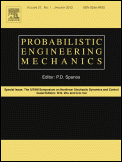
PROBABILISTIC ENGINEERING MECHANICS
Pioneering Methodologies for a Probabilistic Approach to Engineering.PROBABILISTIC ENGINEERING MECHANICS is a premier academic journal published by Elsevier, focusing on the rapidly evolving field of engineering mechanics with a probabilistic approach. Established in 1986, the journal has become an essential resource for researchers, professionals, and students, providing insights into various disciplines such as aerospace engineering, civil and structural engineering, and nuclear energy, among others. With a consistent Q2 ranking across multiple engineering categories, it reflects high-quality research and significant contributions to the field. Although it does not operate under an open access model, it offers invaluable access to advanced methodologies and innovative applications in engineering. The journal aims to promote the development and dissemination of probabilistic approaches to tackle complex engineering problems, thus bridging the gap between theoretical research and practical application. Located in the heart of the UK, PROBABILISTIC ENGINEERING MECHANICS continues to shape the future of engineering through rigorous peer-reviewed articles that influence both academia and industry.
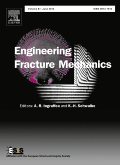
ENGINEERING FRACTURE MECHANICS
Decoding the Complexities of Material FailureENGINEERING FRACTURE MECHANICS, published by Pergamon-Elsevier Science Ltd, is a leading peer-reviewed journal that specializes in the field of fracture mechanics, focusing on the behavior of materials under stress. Established in 1968 and continuing to publish valuable research through 2024, this journal is pivotal for advancing the understanding of fracture mechanisms and their implications across various engineering disciplines. With its impressive impact factor and ranked in the Q1 category for Materials Science, Mechanical Engineering, and Mechanics of Materials, it holds a distinguished position in the academic community, reflected in its high Scopus rankings. Although the journal does not offer Open Access, it provides a wealth of knowledge and insights critical for researchers, professionals, and students aiming to deepen their expertise in the mechanics of materials and innovative engineering solutions.
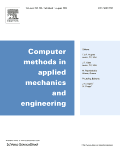
COMPUTER METHODS IN APPLIED MECHANICS AND ENGINEERING
Leading the Charge in Computational Mechanics Excellence.COMPUTER METHODS IN APPLIED MECHANICS AND ENGINEERING, published by Elsevier Science SA, is a premier journal that has significantly contributed to the fields of computational mechanics, computer science applications, mechanical engineering, and the mechanics of materials since its inception in 1972. With an ISSN of 0045-7825 and an E-ISSN of 1879-2138, this journal is recognized for its rigorous peer-review process and is consistently ranked in the Q1 quartile across multiple categories, including Computational Mechanics and Mechanical Engineering. Its impressive Scopus rankings place it in the top tiers of its field, with a percentile ranking of 98th in Computational Mechanics. Researchers, professionals, and students will find the journal's comprehensive scope and high-quality articles invaluable for advancing their knowledge and practices at the intersection of engineering and computation. Although not an open-access journal, its impactful contributions to both theoretical and applied research make it an essential resource for anyone involved in these dynamic fields.

Rock and Soil Mechanics
Elevating Standards in Rock and Soil MechanicsRock and Soil Mechanics is a premier academic journal published by SCIENCE PRESS focusing on the critical fields of civil and structural engineering, geotechnical engineering, and soil science. With an ISSN of 1000-7598 and transitioning to an Open Access format since 2020, the journal strives to enhance the accessibility of cutting-edge research to a global audience, making significant contributions to practices and methodologies in these crucial disciplines. Ranked in the Q2 category for Civil and Structural Engineering as well as Geotechnical Engineering and Engineering Geology, and Soil Science, it boasts respectable standings in Scopus rankings, further affirming its relevance and credibility within the scientific community. The journal not only serves as a platform for original research but also engages with the latest advances in technology and innovative applications in rock and soil mechanics, proving invaluable for researchers, practitioners, and students alike as they navigate an increasingly complex field of study.

Forces in Mechanics
Connecting Global Minds in Mechanical EngineeringForces in Mechanics is a premier open access journal published by ELSEVIER that has carved out a significant niche in the realms of Mechanical Engineering and Mechanics of Materials. Established in 2020 and based in the Netherlands, this journal aims to disseminate high-quality research that explores the fundamental principles and applications of forces within mechanical systems. It operates under the ISSN 2666-3597, showcasing a dedication to transparent and accessible research for scholars around the globe. With a 2023 impact factor ranking placing it in the Q2 quartile for both Mechanical Engineering and Mechanics of Materials, the journal is recognized for its contributions to the field, evidenced by its Scopus ranking—285th in Mechanical Engineering and 184th in Mechanics of Materials, placing it in the 57th and 53rd percentiles, respectively. The journal publishes original research articles, reviews, and technical notes, catering to a diverse audience including researchers, practitioners, and students who are keen to advance their knowledge on the dynamics of forces in mechanical contexts. As it converges from 2021 to 2024, Forces in Mechanics remains committed to providing a platform for innovative research and critical discourse, ensuring that all published work is freely available to the global community.

INTERNATIONAL APPLIED MECHANICS
Innovating Solutions for Real-World Mechanical ChallengesINTERNATIONAL APPLIED MECHANICS, published by Springer, is a pivotal journal within the realm of Mechanical Engineering and Mechanics of Materials. With an ISSN of 1063-7095 and an E-ISSN of 1573-8582, this journal serves as a vital resource for researchers and professionals seeking to stay at the forefront of applied mechanics from 1992 to 2024. Although currently categorized in Q4, with a Scopus ranking reflecting its evolving impact (479 out of 672 in Mechanical Engineering and 303 out of 398 in Mechanics of Materials), the journal continually strives to publish innovative research that bridges theoretical concepts and practical applications in mechanics. Notably, it does not offer Open Access, allowing for a focused distribution amongst scholars and institutions. The journal's contributions are essential for advancing knowledge, fostering collaboration, and enhancing education in the diverse fields of engineering mechanics.

RUSSIAN JOURNAL OF NONDESTRUCTIVE TESTING
Elevating Research in Nondestructive Testing MethodologiesRUSSIAN JOURNAL OF NONDESTRUCTIVE TESTING, published by PLEIADES PUBLISHING INC, is a respected academic journal that has been contributing significantly to the fields of Condensed Matter Physics, Materials Science, Mechanical Engineering, and Mechanics of Materials since its inception in 1996. With a concentrated focus on the latest advancements in nondestructive testing techniques, it serves as a vital resource for researchers, engineers, and practitioners seeking to improve material integrity and safety across various applications. Despite its classification in the Q3 quartile categories, the journal continues to foster scholarly dialogue and innovation in non-destructive research methodologies. Although it does not currently offer open access, the journal remains committed to disseminating high-quality research that influences both theoretical and practical landscapes. With an emphasis on quality, the journal seeks to connect academics and industry experts alike, thus enhancing the relevance and application of nondestructive testing in real-world contexts.
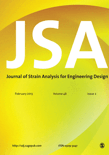
JOURNAL OF STRAIN ANALYSIS FOR ENGINEERING DESIGN
Transforming Engineering Design with Cutting-Edge Strain Analysis.The Journal of Strain Analysis for Engineering Design, published by SAGE Publications Ltd, is a prestigious academic journal that has been at the forefront of *engineering and applied mathematics* research since its inception in 1965. With a focus on the intricate analysis of strain in engineering design, this journal serves as a vital resource for researchers and professionals seeking to push the boundaries of understanding in mechanics and materials engineering. As of 2023, it enjoys a respectable ranking in its respective fields, including Q2 in *Mechanical Engineering* and *Mechanics of Materials*, and Q3 in *Applied Mathematics* and *Modeling and Simulation*, reflecting its significant contribution to the academic community and relevance in practical applications. Although it is not an open-access journal, its rigorous peer-review process ensures the dissemination of high-quality research. The journal provides a platform for innovative ideas and methodologies, fostering advancements in engineering design and analysis vital for both academia and industry. By bridging theoretical foundations with real-world applications, the Journal of Strain Analysis for Engineering Design remains an essential publication for those dedicated to addressing the complexities of modern engineering challenges.
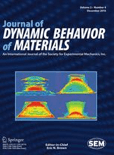
Journal of Dynamic Behavior of Materials
Pioneering Insights into Dynamic Material PropertiesThe Journal of Dynamic Behavior of Materials, published by SpringerNature, serves as a premier platform for the dissemination of innovative research in the fields of materials science and mechanics of materials. With its ISSN 2199-7446 and E-ISSN 2199-7454, this international journal has established itself since its inception in 2015, showcasing groundbreaking insights into the dynamic properties and behaviors of various materials. Operating from Switzerland and headquartered in London, this journal embraces an open-access philosophy, albeit not entirely, to enhance research visibility. According to the Scopus rankings, it is positioned in the Q3 quartile for both materials science and mechanics of materials, indicating its growing prominence in the academic landscape. Researchers and professionals alike benefit from its wide-ranging contributions that address contemporary challenges and advancements, making it a critical resource for advancing knowledge and innovation in these crucial fields.
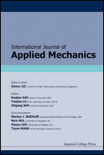
International Journal of Applied Mechanics
Driving Excellence in Mechanics of MaterialsThe International Journal of Applied Mechanics, published by World Scientific Publishing Co Pte Ltd, is a premier platform that serves the fields of materials science, mechanical engineering, and mechanics of materials. Located in Singapore, this journal has established itself as a crucial resource for researchers, professionals, and students, with its convergence of scholarly work from 2009 to 2024. Ranked in the Q2 category across notable disciplines, including Materials Science, Mechanical Engineering, and Mechanics of Materials, it reflects a strong commitment to publishing high-quality research that pushes the boundaries of knowledge in applied mechanics. Despite being a non-open access journal, its successful Scopus rankings, including an impressive rank of #151 in Mechanical Engineering, signify its substantial impact and recognition within the academic community. This journal not only aims to disseminate pioneering research but also to foster collaboration and innovation in the rapidly evolving landscape of applied mechanics.